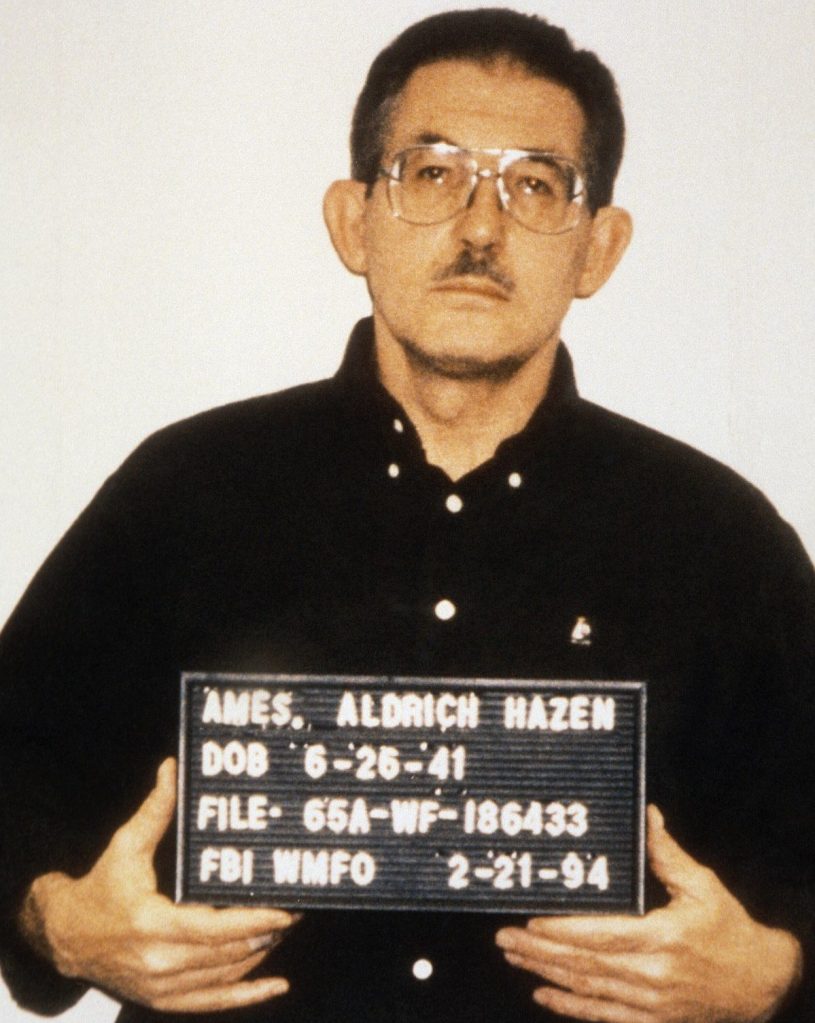The system and culture of espionage during and around the years of the Cold War were marked by intense ideological rivalries between the United States and the Soviet Union. Both nations employed covert intelligence operations to gather information and gain an advantage in the geopolitical arena. Espionage tactics included the use of moles or spies planted within rival intelligence agencies. In the 1990s, a significant breach occurred with the exposure of four major moles in the U.S. intelligence community who had been spying for Russia, formerly the USSR. The first among them was Aldrich Ames. FBI True’s ‘Hunting Graysuit: America’s Deadly Traitor’ details the crimes committed by Ames and the subsequent efforts leading to his arrest, shedding light on a critical chapter in the history of the country.
How was Aldrich Ames Caught?
Aldrich Ames, a counterintelligence officer in the CIA’s Soviet division who was fluent in Russian, betrayed his country by becoming a double agent for the Kremlin. Starting in 1985, along with his wife Rosario, Ames began providing crucial information to the Soviet Union. His actions compromised over a hundred Western intelligence operations, revealing classified details and endangering numerous assets. He disclosed the identities of at least 10 Russian individuals working as spies for the West, resulting in their tragic deaths. Ames, motivated by financial gain, received over $2.5 million from the KGB and its successors over the years.

The late 1980s witnessed the identification and execution of two prominent FBI double agents, leading to suspicions of a mole within the U.S. intelligence community. The discovery of Edward Lee Howard, a junior CIA officer, as one of the spies fueled concerns, but the hunt for the second mole remained dormant until 1991. A series of operational failures and leaks prompted a counterintelligence inquiry involving the FBI and the CIA. Among the list of 20 suspects, Aldrich Ames’s name also came up and the CIA officials also found large amounts of unexplained money flowing into his bank account, especially after meetings with a Russian embassy official.
To closely monitor Aldrich Ames, the FBI proposed his transfer out of the CIA’s Counterintelligence Division, relocating him to a counternarcotics division. Despite the change in his official role, Ames continued his espionage activities with relative ease. However, the FBI determined to unveil his actions, secured permission in 1992 to tap Ames’s phone and discreetly install cameras, bugs, and surveillance inside his house and computer. This surveillance revealed crucial information, such as Ames’s deceptive claims about a vacation. In October 1992, Ames had purportedly traveled to meet his wife’s family in Colombia, but the surveillance uncovered that he had lied and rendezvoused with a Russian agent in Caracas.
After nearly 10 months of intensive investigation, the surveillance units planned a decisive move to catch Aldrich Ames in the act. With information suggesting a potential delivery at around 6:30 in the morning, law enforcement mobilized to apprehend him red-handed. Unfortunately, Ames had altered his routine that day, leaving 30 minutes earlier and returning from the delivery before authorities arrived. In a subsequent attempt, the surveillance team positioned themselves outside the CIA’s main gates later that afternoon, anticipating the opportunity to tail Ames to a drop site. However, Ames departed from the location so swiftly that the team was unable to follow him, marking that fateful day as “Black Thursday” in the annals of the FBI.
Facing escalating urgency, law enforcement embarked on a risky operation. On the night of September 15, 1993, a black van was dispatched to Aldrich Ames’s residence on North Randolph Street in the affluent Arlington, Virginia suburb. Since Ames was away in Ankara, Turkey, on CIA business, the surveillance team seized the opportunity to substitute his trash can with an identical one. The contents were carefully examined at a different location before returning the original can. From the discarded items, investigators discovered a torn-up coded message, confirming Ames’s intention to rendezvous with Russian contacts in Bogota, Colombia.
On February 21, 1994, federal agents executed a search at Aldrich Ames’s residence, authorized by the Attorney General. The search uncovered substantial incriminating evidence against Ames and his wife, exposing the methods of communication employed in their espionage activities. The arrest occurred just a day before Ames was scheduled to embark on an official trip to Ankara and Moscow. Lured out of his home under the pretext of reading a cable at his office, a fabricated scenario coordinated with Ames’s boss, he was intercepted by Mike Donner, who led the surveillance teams. Donner informed Ames, 31, of his arrest for espionage. Despite Ames’s initial protest, handcuffs were applied, and he was escorted to the back seat of a police car.
Aldrich Ames is Serving His Sentence Today

On April 28, 1994, both Aldrich Ames and his wife pleaded guilty to the charges brought against them. Aldrich Ames received a life sentence without the possibility of parole, while Rosario Ames was sentenced to 63 months in prison on October 20, 1994. As part of the legal proceedings, Ames forfeited his assets, and $547,000 of the seized funds were directed to the Justice Department’s Victims Assistance Fund. In court, Ames confessed to compromising almost all Soviet agents of the CIA and other American and foreign services within his knowledge. He admitted that his concerns weren’t centered on being apprehended by the FBI or CIA but rather on the potential threat posed by Soviet defectors. Ames acknowledged in an interview a few months after his arrest that he initiated spying due to greed and a desire for money. Additionally, he revealed that he struggled with a drinking problem before embarking on his espionage activities. He is currently serving his sentence in the medium-security Federal Correctional Institution (FCI) in Terre Haute, Indiana, and will never be out on parole.
Read More: Oleg Gordievsky: Where is the MI6 Spy Now?


You must be logged in to post a comment.